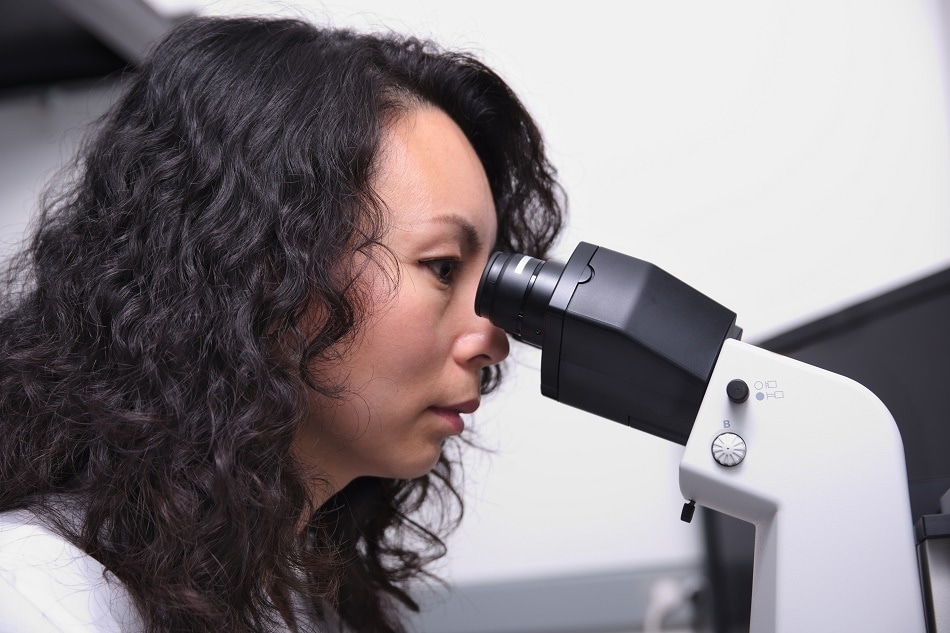
Image Credits: Adam Frank/shutterstock.com
Confocal microscopes utilize laser scanning technology and optical screening to create detailed images of sample tissues or objects. First patented as an idea in 1957 by Marvin Minsky after his own feat of building the first confocal microscope in 1955. However, it has taken time for technology to advance to fully utilize the potential of these microscopes. Flash forward to 2019 and confocal microscopes are a veritable staple in any university or research facility that studies the structures of biological molecules.
High Level of Detail
The first major benefit of confocal microscopes is the level of detail which can be achieved. With an already impressive horizontal resolution of 0.2 microns and vertical resolution of 0.5 confocal microscopes, together with deconvolution microscopes, can break the resolution limit.
To understand how this is possible, it is important to have a simple grasp of how confocal microscopes operate. As with the conventional widefield microscope, confocals work using a series of mirrors, however, they are set apart as they use a focused beam of electrons which are precisely targeted at the sample under study.
The targeted part of the sample will have been fluorescently tagged before it was mounted and fixed on a microscope slide. These fluorescent proteins are excited by the beam of electrons, which causes them to emit light. This light is then perceived by a dichromic (also known as a dichromatic) mirror within the microscope chamber, which directs it towards a photomultiplier tube.
Before this light can be received by the photomultiplier, the light is screened through a pinhole aperture, while other light produced from the sample (which is outside of the focal plane being observed or is out of focus) is rejected with a screening sheet. The photons which do pass through the pinhole aperture are magnified in the photomultiplier and the signal is perceived by a computer.
By scanning the laser point-by-point across the sample, an image is generated pixel-by-pixel, to produce an incredibly detailed digital rendering of the object under observation.
Fluorescence is Key
The use and necessity of fluorescent tagging in confocal microscopy is a distinct advantage. Over the past century, many different fluorescent protein tags have been developed to help isolate and image different molecules within a biological structure. The advantage of this is that cell lines can be developed which are altered to have multiple different fluorescent protein tags. These will all emit different colored light when excited.
This is useful when rendering images with a confocal microscope as it allows very distinct segregation of structures and ease of perception of their different locations. Importantly, this is without the application of false color after the image has been rendered (which is common in electron microscopy).
2D and 3D Reconstruction
Building on this, confocal microscopes can produce three dimensional (3-D) images, as well as the standard two-dimensional (2-D) visualizations most microscopes provide. Because the confocal microscope can break the resolution barrier by utilizing sequential laser scans of the sample, it is possible to render a 3-D image of each fluorescently tagged part of the cell. These images can then be put back together in their 3-D state to create a detailed structural graphic.
Summary
While no microscope is perfect all have their advantages. In the past, there was debate over whether confocal and deconvolution microscopes did provide an accurate schematic of the cell ultrastructure. However, over the past 62 years, confocal microscopes have become laboratory staples, a necessity for accurate and detailed visualization of biological molecules.
Sources and Further Reading
Disclaimer: The views expressed here are those of the author expressed in their private capacity and do not necessarily represent the views of AZoM.com Limited T/A AZoNetwork the owner and operator of this website. This disclaimer forms part of the Terms and conditions of use of this website.